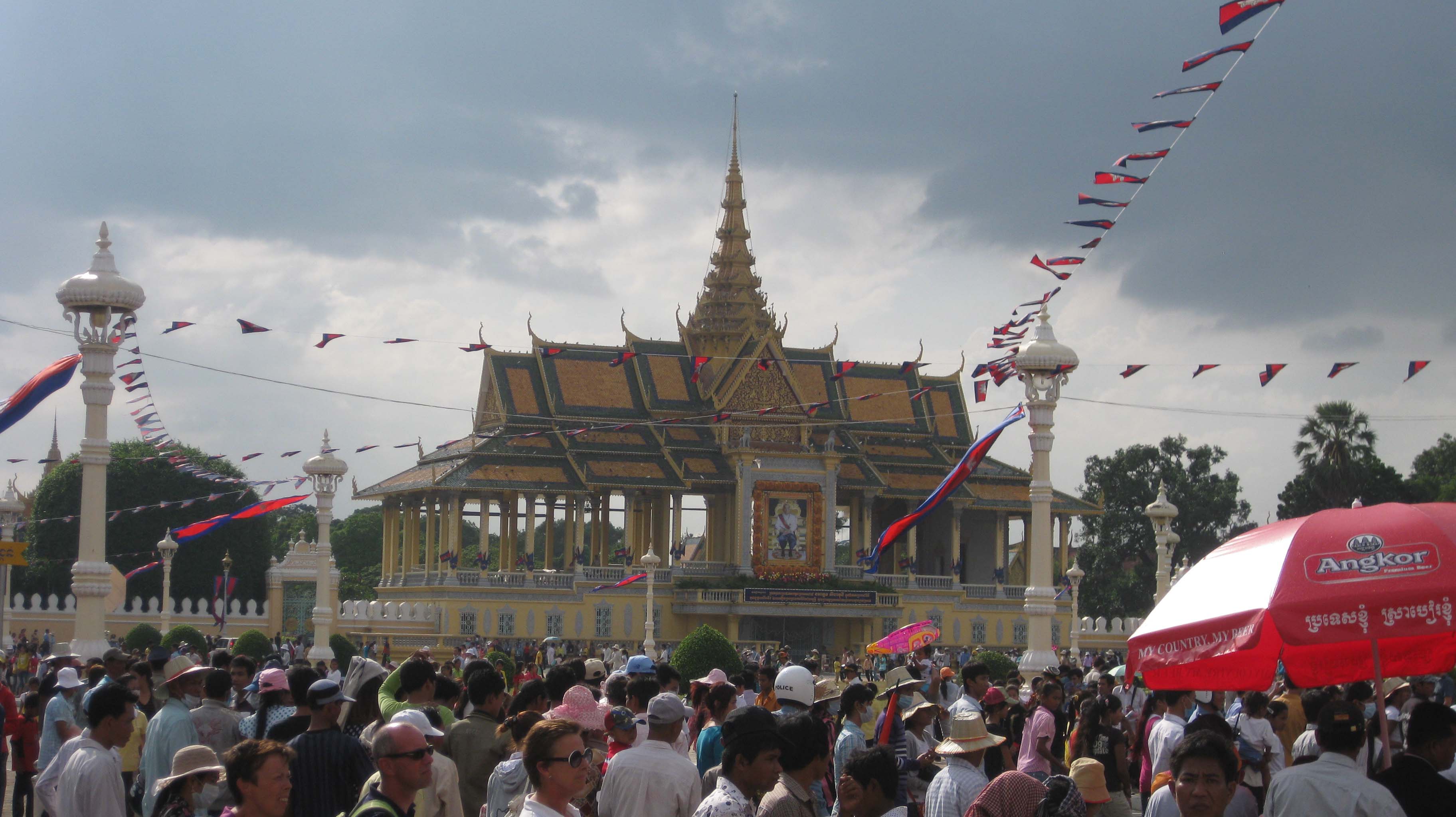The Water Festival (Bonn Om Touk) in Cambodia takes place each year in October or November, at the time of the full moon, and is the most extravagant and exuberant festival in the Khmer calendar, outdoing even the new year celebrations.
Starting on the day of the full moon in late October or early November, up to a million people from all walks of life and from all over the country flock to the banks of the Tonle Sap and Mekong Rivers in Phnom Penh to watch traditional boats racing on a huge scale. Every year more than 300 of the brightly colored boats with over 2,500 paddlers battled it out for top honors. The boat racing dates back to ancient times marking the strength of the powerful Khmer marine forces during the Khmer empire.
During the day, the boats race in pairs along a kilometer-long course, and then in the evening brightly decorated floats cruise along the river prior to and during the nightly fireworks displays. There is often a parallel festival at Angkor Wat and although it is smaller in scale it is just as impressive due to the backdrop of Angkor Wat.


The festival marks the changing of the flow of the Tonle Sap River and is also seen as thanksgiving to the Mekong River for providing the country with fertile land and abundant fish. It is at this time when the river flow reverts to its normal downstream direction. In a remarkable phenomenon, the Tonle Sap River earlier reverses its course as the rainy season progresses, with the river flowing “upstream” to Tonle Sap Lake. Then as the rainy season tapers off, the river changes direction once again as the swollen Tonle Sap Lake begins to empty back into the Mekong River, leaving behind vast quantities of fish.
The Khmer people choose the full moon of Khe Kadek as the time to conduct the water festival, the procession of illuminated floats, the salutation to the moon, and the Auk Ambok as a means to express their profound thanks to the Mekong River and Tonlé Sap River. The festival is usually held for three days, i.e. the 14th and 15th of the waxing moon and the 1st of the waning moon. Festivities take place in front of the Royal Palace.
During three days many Cambodians have to settle their daily works ready in the mornings so that they will have chances to revel in the traditional celebration in front of the Royal Palace in the afternoons and enjoy viewing the fireworks displays early in the evenings.
Lowell’s water festival is modeled after celebrations held in Cambodia and other Southeast Asian nations, traditionally in November, to commemorate the finish of their harvest season. One of the largest water festival in the world is held on the Mekong River in Phnom Penh, the capital of Cambodia.
Cambodia Water Festival HistoryThe history of the Cambodian water Festival is said to date back to the 12th century. While there are different accounts of why the water festival started one of them includes King Jayavarman VII wanting to kick off the Cambodian fishing season in style by keeping the river happy and ensuring a bountiful harvest will come yearly – which coincides with the Full Moon. Another possibility is that the boat races were a way to train his navy for battle. Whatever the case may be, the point s Cambodians enjoys this festival a great deal and will continue to do so. Fishing is a vital source of financial stability for the Cambodian person -which is why they would want to keep the river happy by honoring it.
Cambodia Water Festival Customs and ActivitiesMany months before the Water Festival begins, the locals prepare their fishing boats by decorating them in lavish, colorful decorations – boats with large eyes on the prowl to discourage evil spirits. Thousands of local flock watch the boat races and cheer for their favorites. Day 2 is when the boat races really start to begin. A massive fireworks display also takes place that will light up the night sky. The entire area has a circus atmosphere that locals and tourists will surely enjoy. Unlike western boat races, Cambodian boat crew face forward instead of backward. While the other festivities are great, the boat races at the Water Festival are the main event and not to be missed.
Resources
Cambodia’s Water Festival
http://www.thingsasian.com/goto_article/article.1655.html
http://aglobalworld.com/holidays-around-the-world/cambodia-water-festival/


